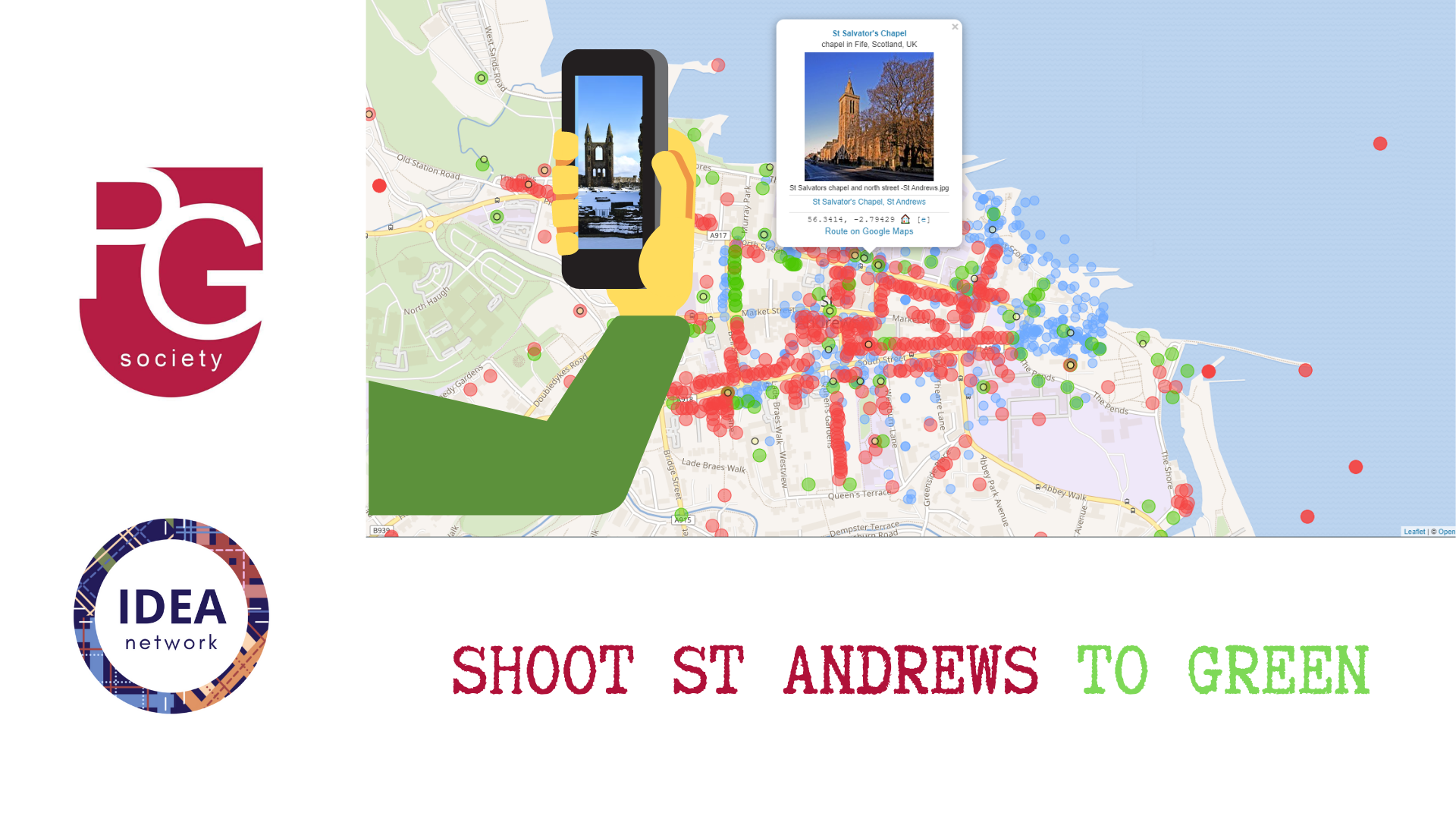
Many photos of St Andrews are missing from open-access maps. WikiShootMe allows anyone to add an image to places on Wikimedia and Wikipedia that doesn’t already have one. So we took the initiative to take photos of St Andrews’ historic buildings and upload them to Wikicommons using WikiShootMe. However, WikiShootMe is currently only a desktop website and is difficult to use when out and about. Many usability challenges emerged, leading us to turn this into a User-Centred Interaction Design project.
Background
WikiShootMe is a tool to show Wikidata items, Wikipedia articles, and WikiCommons images with coordinates, all on the same map. One of the IDEA network activities involves inviting participants to use this tool, only available though the website, to add an image to places on the shown map that doesn’t already have one. At a recent event, the IDEA network collaborated with Abd Alsattar Ardati, SACHI researcher and Postgraduate Development Officer at the Postgraduate Society, on hosting a pilot event to celebrate the town of St Andrews. St Andrews is well recognised globally for its history and over 600 years old University, but most photos of places are missing from open-access maps! Abd invited students and locals to a one-hour “Shoot St Andrews to Green” event on Saturday, the 20th of August 2022. This event aimed to spark a discussion and encourage attendees to become “open knowledge activists” and contribute as part of a network of others doing the same at the University. The session showcased different opportunities to develop skills in photography and team collaboration while filling information gaps about our town.
Problem
On a recent Shoot St Andrews to Green event, six participants used their phones’ browsers to take pictures and upload them to the WikiShootMe website.
At the start, the organiser demonstrated how to create an account, and then the participants go “hunting” for photos. With roughly six students walking with their phones around the town, it can be challenging to track the progress of participants; some participants might upload the same photos. There was little to no error prevention measures in place, and recovering from an error can be daunting. For example, some participants uploaded photos by mistake and to delete the photo, they have to go through a lengthy process, which has a low discoverability. Other participants had issues uploading the photos which were subsequently lost when the page was refreshed.
This led Abd to collaborate with Xu Zhu and Kenneth Boyd to collaborate on translating these challenges into a project for CS students taking the CS5042: User-Centred Interaction Design module to develop interfaces for a mobile app that could support future similar activities in a more user-friendly way.
Goals
In this project, we are looking for innovative and creative ways to present the relevant information about the process, available help and documentation that would allow participants to help navigate the space. For example, if someone organised an event, who would be responsible for what images are asked for? If someone wanted to see who had uploaded the largest amount of photos at the event, how would they find this information without losing focus on their main task? Can we gamify the process of uploading pictures? Can we develop interfaces to prevent losing picture features in case the pictures were not uploaded for any reason (e.g. offline working mode)?
The current focus will be on developing an innovative and user-friendly visual interface to navigate the list of photos to be covered, what has been covered, and potential ways to get help from the organiser. It should also be easy to use for potential organisers who would like to add, amend or remove an event from the system. In addition, the organiser should be able to moderate, approve, and bulk upload images to Wikimedia Commons.
An awareness of technologies that could be leveraged for future implementation (for example, suggesting adding the image to a Wikipedia article, if it has one) would make a design more connected to the wider Wikimedia community. Involvement and building connections with the tool’s developers, Wikimedia community and design team are highly desirable and recommended for ensuring that the design fits the community norms and expectations.
There will be posting another blog about the project’s results soon.

